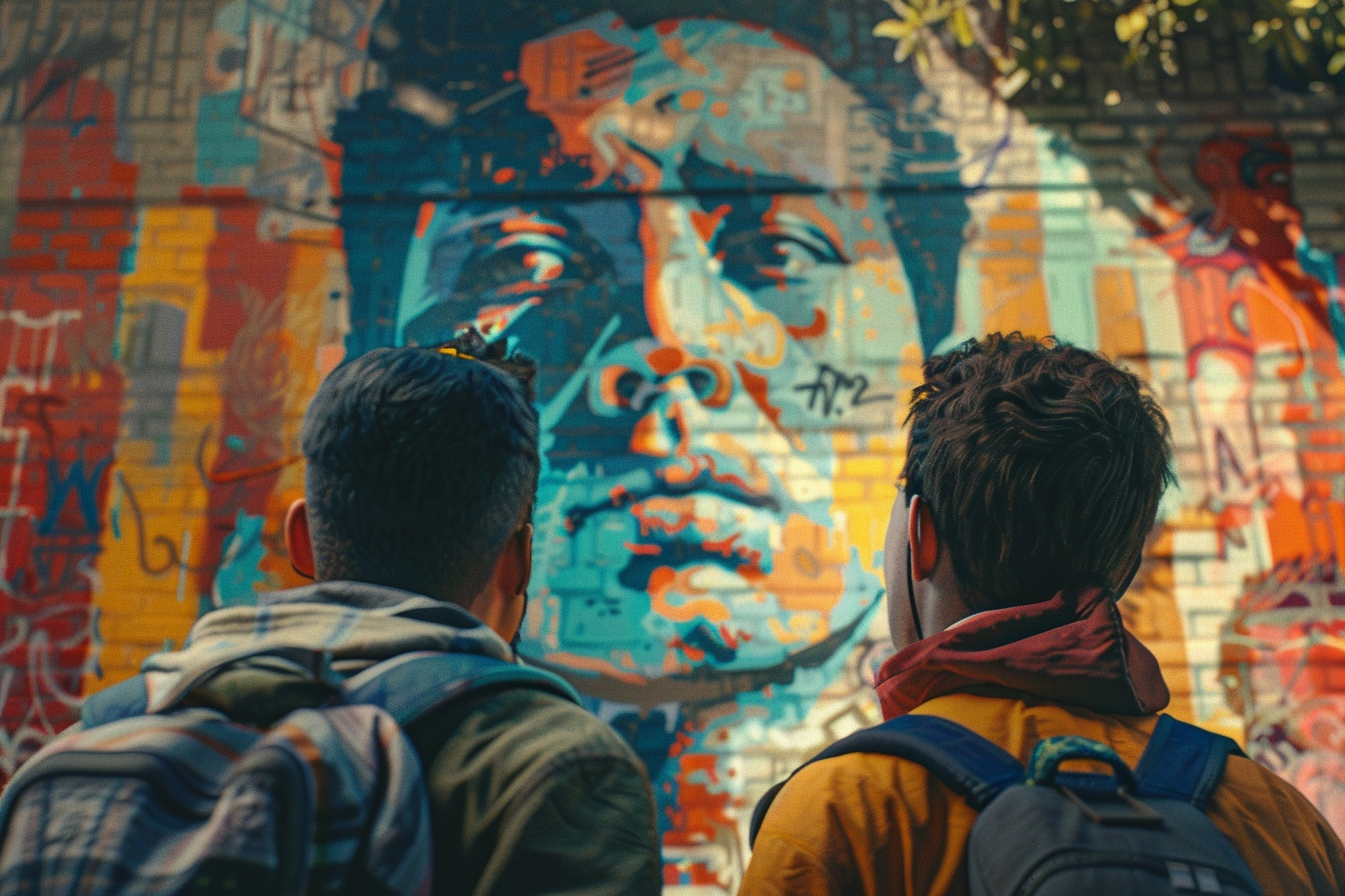Street wall art, often referred to as urban art or graffiti, has evolved from a rebellious expression to a celebrated art form that merges creativity with culture, social commentary, and community engagement. From vibrant murals to provocative graffiti, street art transforms mundane public spaces into extraordinary visual experiences. In this blog, we explore the history and significance of street wall art and its growing impact on modern urban landscapes.
The Origins of Street Wall Art
While street art has roots in ancient cultures, with early examples like cave paintings and murals from civilizations such as Egypt and Rome, the modern street art movement began in the 1960s and 1970s in New York City. During this time, graffiti artists began tagging walls, trains, and buildings with spray paint, asserting their presence in the urban environment.
Influenced by hip-hop culture, social unrest, and a desire to claim public space for artistic expression, street art quickly grew from an act of defiance into a respected and globally recognized art form.
Street Wall Art Today: More Than Graffiti
Today, street wall art has expanded far beyond the traditional graffiti tag. It encompasses a diverse range of styles and techniques, from large-scale murals to intricate stencils, mosaics, and even 3D installations. Street art has become an integral part of cityscapes, contributing to urban revitalization, sparking social conversations, and bringing communities together.
1. Murals
Large-scale murals are one of the most powerful forms of street art. Often depicting cultural, political, or social themes, these murals beautify urban environments while giving artists a platform to address pressing issues such as environmentalism, human rights, and local history.
2. Graffiti
Despite its controversial nature, graffiti remains a dynamic form of self-expression. From tagging and detailed lettering to abstract designs, graffiti continues to evolve as an art form, with artists using public spaces to share their identities and perspectives.
3. Stencils and Paste-Ups
Stencils and paste-ups offer street artists a quicker, more efficient way to replicate their designs. Popularized by renowned artists like Banksy, these techniques allow for sharp, precise artwork in public spaces, often carrying social or political messages.
4. 3D Street Art
Pushing the boundaries of traditional street art, 3D street art creates optical illusions, sculptures, or interactive installations that engage the viewer in new and innovative ways. These works transform public spaces into immersive experiences, inviting viewers to interact with the art and their surroundings.
Street Art as a Cultural and Social Commentary Tool
Street art serves as a powerful vehicle for cultural expression and activism. Artists often use their work to address societal issues such as inequality, political corruption, and environmental degradation. Because it is public and accessible, street art can reach a wide audience and provoke conversations that lead to change.
In cities like Berlin and Buenos Aires, street murals have become a form of protest, challenging political regimes and calling attention to economic crises. In Rio de Janeiro’s favelas, street art has played a significant role in reclaiming neglected spaces, transforming them into vibrant areas that reflect the voices of marginalized communities.
The Role of Street Art in Urban Revitalization
Street art plays a significant role in urban revitalization, breathing life into neglected or deteriorating areas. Cities like Detroit, Miami’s Wynwood Walls, and London have used large-scale murals and street art initiatives to transform overlooked districts into popular cultural hubs.
These artistic interventions often drive economic growth, attracting tourists and drawing attention to local businesses. However, it’s important to consider the implications of gentrification—while street art can help revitalize a neighborhood, it can also lead to the displacement of long-term residents.
The Fine Line Between Art and Vandalism
One of the most debated aspects of street wall art is whether it should be considered art or vandalism. The legality of street art often depends on factors like location, permission from property owners, and local laws. In many places, creating unauthorized street art can lead to legal consequences.
However, an increasing number of cities are embracing street art by commissioning murals and installations as part of beautification and public art initiatives. These collaborations are helping to legitimize street art and increase its acceptance in mainstream culture.
Street Art as a Global Phenomenon
Once regarded as a rebellious subculture, street art has become a global phenomenon. International festivals, exhibitions, and galleries dedicated to street art have sprung up around the world. Renowned artists such as Banksy, Shepard Fairey, and JR have gained global recognition for their work, proving that street art transcends its underground origins.
In cities like Barcelona, São Paulo, and Melbourne, street art has become a vital part of the cultural identity, with entire districts dedicated to public murals and graffiti. These art hubs attract street artists from across the world, creating a melting pot of diverse styles and influences.
Conclusion: The Lasting Impact of Street Wall Art
Street wall art has come a long way from its early rebellious roots to becoming an integral part of modern culture. Whether it’s a colorful mural on a bustling city street or a simple stencil tucked in an alley, street art continues to shape the urban environment and spark important conversations. By turning public spaces into canvases, street artists remind us of the power of art to reflect society, inspire change, and foster a sense of community.
Though often temporary, the influence of street wall art is lasting—challenging our perceptions of public spaces, art, and the messages we encounter every day.

